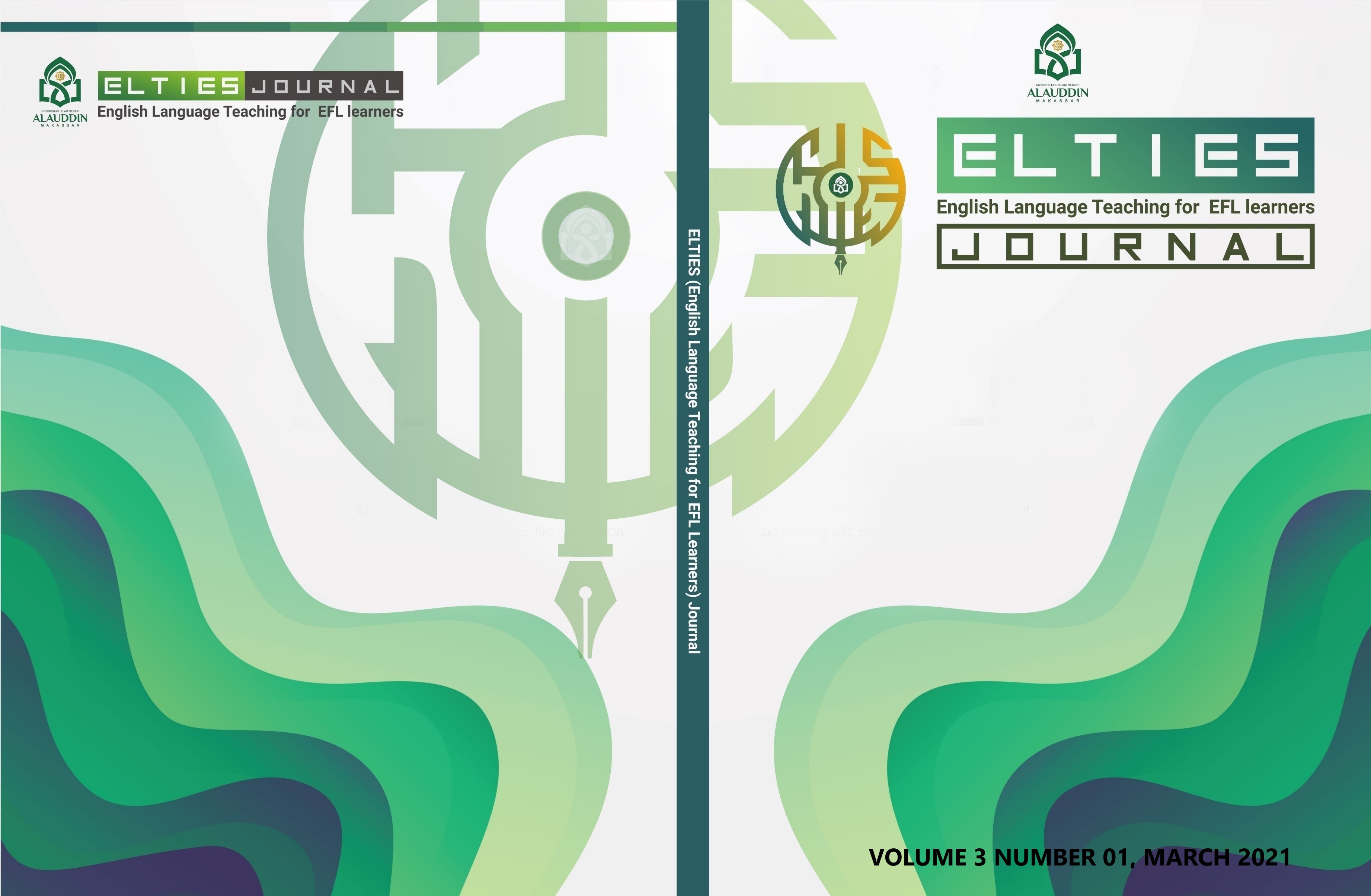IMPROVING STUDENT’S SPEAKING ABILITY BY IMPLEMENTING TWO STAY TWO STRAY METHOD
Abstract
Students get difficulty in speaking because they are nervous to express their ideas or thoughts directly and experience mispronunciations. The teacher should choose the best method to make the students improve their speaking ability. Therefore, the researchers focused their study on improving students’ speaking ability by implementing Two Stay Two Stray method. Collaborative classroom action research was used as the research design in this research whose purposes were to describe the teacher’s and the students’ activities in the implementation of TSTS method and the supporting and obstructing factors found by the teacher when implementing TSTS method as well as to know whether or not TSTS could improve the student’s speaking ability. The subjects of this research were 15 students at class VII A of MTs Al- Washoya. Meanwhile, the data were taken from the students’ speaking test and the observation. Data analysis showed that the teacher’s and the students’ activities were as what was written in the lesson plan. The supporting factors were the students’ enthusiasm and motivation in joining speaking class and the obstructing factors were that TSTS spent much time and caused the students’ confusion in the first meeting. Then, the students’ speaking ability got significant improvement in cycle two. Thus, it could be concluded that the implementation of TSTS method could improve the students’ speaking ability.
References
Annas, Usman, B., & Asnawi, M. (2018). Technique to Develop Young Learners’ Speaking. English Education Journal (EEJ), 422-422, Juli 2018, 422–422.
Aye, K. K. &, & Phyu, K. L. (2015). Developing students’ speaking skill through short stories.
Borong, M. M., & Pd, S. (2016). The Students ’ Enthusiasm in Learning English of the Tenth Grade Students at SMK Kristen Tagari. Tefl Overseas Journal, 56–84.
Fachrurrazy. (2011). Teaching English as a Foreign for Teacher in Indonesia. State University of Malang Press.
Fachrurrazy. (2012). Teaching English as a Foreign fo Teacher in Indonesia. State University of Malang Press.
Halim, M. L. Al. (2019). Increasing English Achievement Through Two Stay- Two Stray ( Ts-Ts ) Method. KARANGAN: Jurnal Kependidikan, Pembelajaran, Dan Pengembangan, 01(02), 102–109.
Hastuti, S. H., Zaim, M., & Radjab, D. (2013). The Effect of Think pair Share and Students’ Motivation Toward Their Speaking Skill in Descriptive Text at The Seventh Grade of SMPN 2 Baturaja Ogan Komering ULU (OKU) South Sumatera. Journal of Chemical Information and Modeling, 53(9), 1689–1699. https://doi.org/10.1017/CBO9781107415324.004
Huda, M. (2014). Model-model Pengajaran dan Pembelajaran. Pustaka Belajar.
Irawati, I. (2014). Improving students’ speaking ability through communicative language games.
Lesia, E. S., & Anggraini, N. (2017). Using Two Stay Two Stray (TSTS) to Improve Speaking Achievementof The Tenth Grades Students of SMAN 10 Palembang. JURNAL BAHASA DAN SASTRA, 6(1), 1–6.
Lie, A. (2010). Cooperative Learning. Grasindo.
Mairi, S. (2016). An Aanalysis of Speaking Fluency Level of The English Department Students of Universitas Negeri Padang. Jurnal Bahasa Dan Pembelajaran Bahasa.
Ningsih, E. W. (n.d.). Kecemasan Dalam Berbicara Bahasa Inggris Mahasiswa Semester Keempat Akademi Bahasa Asing Balikpapan. 2017.
Oya, T., Manalo, E., & Greenwood, J. (2009). The Influence of Language Contact and Vocabulary Knowledge on the Speaking Performance of Japanese Students of English. The Open Applied Linguistics Journal, 2(1), 11–21. https://doi.org/10.2174/1874913500902010011
Suprijono, A. (2010). Cooperative Learning: Teori dan Aplikasi PAIKEM. Pustaka Belajar.
Tahir, S. A. Z. (2015). Improving Students’ Speaking Skill through Yahoo Messenger at University of Iqra Buru.
Vibulphol, J. (2016). Students’ Motivation and Learning and Teachers’ Motivational Strategies in English Classrooms in Thailand. English Language Teaching, 9(4), 64. https://doi.org/10.5539/elt.v9n4p64
Wafi, A. (2019). Using Games to Improve Students’ Active Involvement in the Learning of English Syntax at IAIN Madura: An Autonomous Learning. OKARA: Jurnal Bahasa Dan Sastra, 13(1), 107. https://doi.org/10.19105/ojbs.v13i1.2256
Wibowo, A. A. (2013). The Effectiveness of Using Two Stay Two Stray Technique in Teaching Reading Comprehension of Second Year Students in SMPN 1 Sumber Ngempol In Academic Year 2012/2013. Institut Agama Islam Negeri Tulungagung.
Zamzam, F. (2015). Developing Speaking Skill of Grade XI Students at SMAN 5 Palu Through Two Stay Two Stray Technique. Bahasantodea, 3(1), 109–117.

